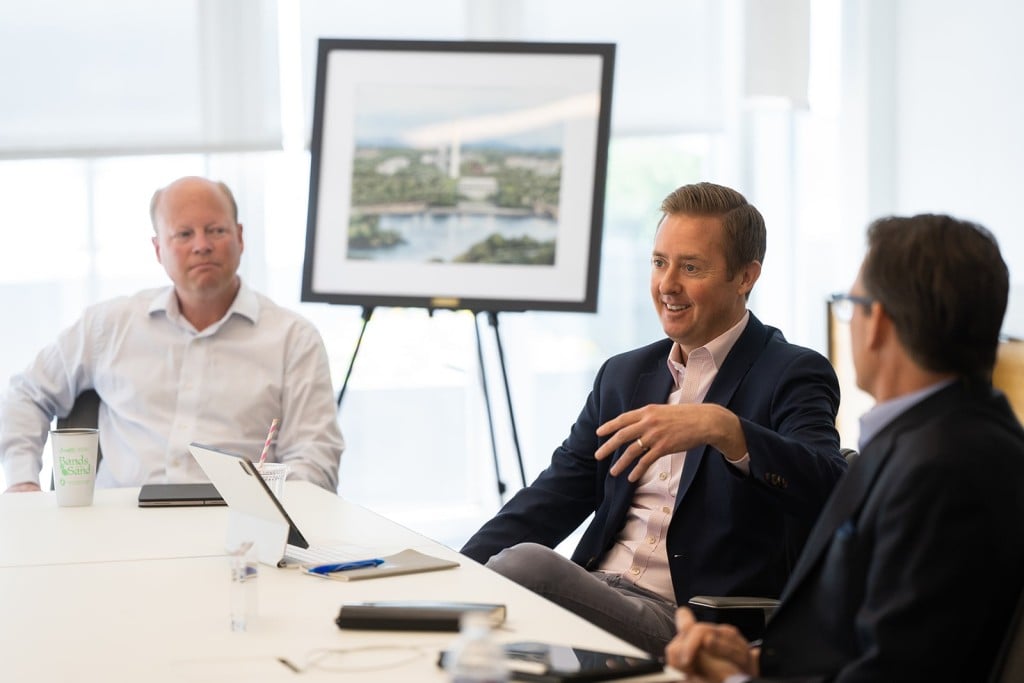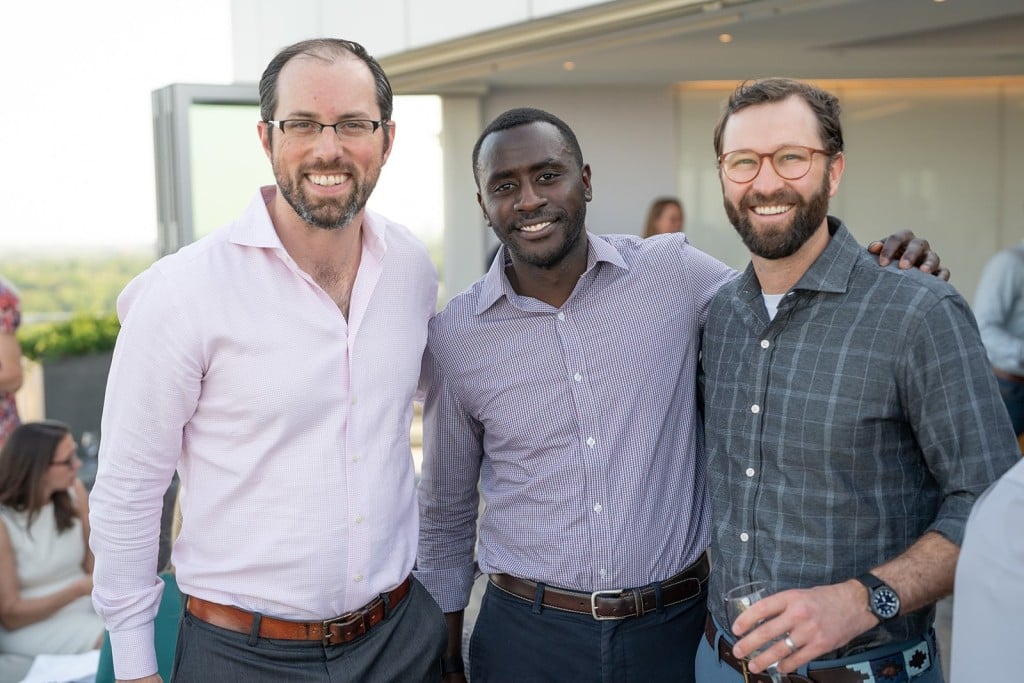Contributors
Related Articles
Stay Up To Date
Something has gone wrong, check that all fields have been filled in correctly. If you have adblock, disable it.
The form was sent successfully
As holding periods shrink and noise grows louder, long-term investing remains rooted in time-tested principles. Compounding, discipline, and patience continue to drive meaningful wealth creation beyond the market’s short-term distractions.
Patience is one of the scarcest resources in modern markets. In the 1950s, the average equity investment was held for eight years. Today, the typical holding period has collapsed to less than six months—an interval so brief that it hardly qualifies as investing at all.1
This shortening of horizons has been amplified by technology, the culture of 24/7 news, and the demands of corporate scorekeeping. As a result, many investors and companies alike are oriented toward the immediate, at the expense of the enduring.
Yet history tells a different story. One of the most significant ways to generate wealth in public markets has not come from short bursts of opportunism but from decades of compounding in a relatively small set of companies.
To benefit from those outcomes requires more than foresight; it requires the willingness to give time its due. Long-term investing is not nostalgic, nor is it passive. It is a discipline. It can act as a way to resist the constant pull of the present in order to participate in the creation of the future.
Time as a Force Multiplier
The fundamental logic of long-term investing rests on the difference between linear and exponential growth. Human beings, by nature, tend to think in straight lines. We assume tomorrow will look much like today, adjusted only slightly. But oftentimes, markets reward those who recognize when the curve bends upward—when small incremental gains accumulate into something transformative.
This is why companies that invest heavily in research, development, and innovation might appear unimpressive in the short term. Their expenses look high, their margins constrained, and their results uncertain. But given time, those same investments can create products, services, and platforms that help to redefine industries.
Amazon’s decision to build its cloud-computing business and Alphabet’s relentless improvements to Google’s search engine looked costly or quixotic when measured in quarters. But they became extraordinary engines of wealth creation when measured in decades.
For investors, the lesson is clear: time itself can be a force multiplier. If a well-chosen business is given the time to compound over long horizons, it can oftentimes deliver returns that no short-term trade can match.
But compounding is fragile. It requires the discipline to remain invested long enough for the curve to steepen, and the clarity to distinguish between temporary turbulence and permanent impairment.
Patience in a World of Distraction
In practice, the greatest challenge to long-term investing is not intellectual but emotional. Modern markets are noisy, with each data point amplified and each movement scrutinized. In such an environment, volatility can feel indistinguishable from risk. But the two are not the same. Volatility is simply the price of admission for owning an equity. Risk, properly defined, is the prospect of permanent capital loss.
The distinction matters. Investors who equate every drawdown with danger are tempted to exit too early and reenter too late, locking in losses and missing recoveries. Those who can hold steady see that volatility can create opportunity. When market participants are forced to sell by fear, liquidity needs, or short-term pressures, patient investors can accumulate ownership in businesses at prices disconnected from their long-run value.
The discipline to stay invested during difficult periods is not passivity. It is an active choice to value long-term potential over short-term comfort. Just as entrepreneurs must endure setbacks on the path to innovation, investors must tolerate drawdowns on the path to compounding.
Knowing When to Endure and When to Exit
Long-term investing is often caricatured as a refusal to sell. In reality, the discipline requires both patience and decisiveness. Compounding demands time, but it also demands discernment. Not every business is capable of sustaining growth for decades. Competitive advantages erode, industries mature, and disruptive forces reshape markets.
The art of long-term investing lies in knowing which companies still deserve endurance and which do not. The goal is not to hold at all costs, but to hold with conviction. That means owning businesses with durable advantages, adaptable strategies, and leadership committed to long-term value creation. It also means recognizing when those qualities have diminished. Exiting a once-promising business is not a failure of long-termism; it is an expression of it.
Consider the arc of companies that soared during the COVID-19 pandemic. Many appeared indispensable in the moment, achieving levels of growth that pulled forward years of demand. Yet as conditions normalized, some companies faced heightened competition, saturated markets, or structural limits. A disciplined long-term investor does not cling to past assumptions—they revisit the original thesis in light of new evidence. Duration can be powerful, but it must be paired with humility.
The Courage of Duration
To invest with a long horizon is to swim against the prevailing current. It requires the courage to appear out of step when short-term momentum favors different outcomes. It means tolerating stretches of underperformance relative to benchmarks or peers who are trading more actively. And it asks for faith in the principle that value creation in the real economy—through innovation, productivity, and scale—ultimately outweighs the noise of speculation.
This courage is not bravado; it is discipline. It rests on research that provides confidence in a company’s trajectory, on frameworks that help distinguish between signal and noise, and on an understanding of history’s lessons.
Over time, markets have consistently underestimated the durability of certain business models, from consumer platforms to digital infrastructure to payments networks. The investors who benefited most were those who stayed the course long enough to let underestimated growth compound.
Culture and Alignment as Enablers
Long-term investing does not occur in a vacuum. It requires structures, incentives, and cultures that support patience. Corporate executives who are compensated primarily on quarterly results are naturally inclined to optimize for the short term, even at the expense of long-term health. Similarly, investment firms driven by asset gathering or short-term performance comparisons may struggle to act with duration.
By contrast, investors who align their processes and incentives with multiyear horizons can create the conditions for patience. Measuring results over three, five, or ten years reframes volatility as noise and recenters attention on the underlying trajectory of a business. Aligning compensation, governance, and strategy with long-term outcomes makes it possible to resist the constant drumbeat of the present.
Time as the Ultimate Hedge
Markets will always be filled with distractions. Economic cycles, political shocks, technological fads, and shifting narratives all compete for attention. But one of the most enduring truths of investing is that wealth tends to accumulate for those who can harness the power of compounding over time. That requires the courage to hold on when others are shaken, the humility to let go when the facts change, and the patience to allow businesses to grow into their potential.
Long-term investing is not about comfort; it is about clarity. It strips away the distractions of the moment to focus on what truly matters: the ability of a business to create lasting value.
In a world where the immediate has become dominant, the willingness to embrace duration is itself a competitive edge. Time, more than any model or forecast, remains the ultimate hedge.
1 https://www.politifact.com/factchecks/2016/jul/06/mark-warner/mark-warner-says-average-holding-time-stocks-has-f/?utm, https://smartasset.com/investing/what-is-the-average-stock-holding-period?utm
Amazon and Alphabet are shown for illustrative purposes only and are not representative of the average company experience.
Disclosures:
As of September 11, 2025, Amazon and Alphabet were held across Sands Capital strategies and were referenced because they are the two securities that have been held for the longest periods at Sands Capital.
The views expressed are the opinion of Sands Capital and are not intended as a forecast, a guarantee of future results, investment recommendations or an offer to buy or sell any securities. The views expressed were current as of the date indicated and are subject to change.
Sands Capital seeks to own a few but the best growth businesses as academic research supports the notion that a few businesses generate a disproportionate amount of wealth over time. There is no guarantee that Sands Capital can identify these businesses.
This material may contain forward-looking statements, which are subject to uncertainty and contingencies outside of Sands Capital’s control.
Readers should not place undue reliance upon these forward-looking statements. There is no guarantee that Sands Capital will meet its stated goals. Past performance is not indicative of future results.
All investments are subject to market risk, including the possible loss of principal. Recent tariff announcements may add to this risk, creating additional economic uncertainty and potentially affecting the value of certain investments. Tariffs can impact various sectors differently, leading to changes in market dynamics and investment performance.
References to “we,” “us,” “our,” and “Sands Capital” refer collectively to Sands Capital Management, LLC, which provides investment advisory services with respect to Sands Capital’s public market investment strategies, and Sands Capital Alternatives, LLC, which provides investment advisory services with respect to Sands Capital’s private market investment strategies, which are available only to qualified investors. As the context requires, the term “Sands Capital” may refer to such entities individually or collectively. As of October 1, 2021, the firm was redefined to be the combination of Sands Capital Management, LLC and Sands Capital Alternatives, LLC (previously known as Sands Capital Ventures, LLC). The two investment advisers are combined to be one firm and are doing business as Sands Capital. Sands Capital operates as a distinct business organization, retains discretion over the assets between the two registered investment advisers, and has autonomy over the total investment decision-making process.
Information contained herein may be based on, or derived from, information provided by third parties. The accuracy of such information has not been independently verified and cannot be guaranteed. The information in this document speaks as of the date of this document or such earlier date as set out herein or as the context may require and may be subject to updating, completion, revision, and amendment. There will be no obligation to update any of the information or correct any inaccuracies contained herein.
This communication is for informational purposes only and does not constitute an offer, invitation, or recommendation to buy, sell, subscribe for, or issue any securities. The material is based on information that we consider correct, and any estimates, opinions, conclusions, or recommendations contained in this communication are reasonably held or made at the time of compilation. However, no warranty is made as to the accuracy or reliability of any estimates, opinions, conclusions, or recommendations. It should not be construed as investment, legal, or tax advice and may not be reproduced or distributed to any person.
Notice for non-US Investors.













